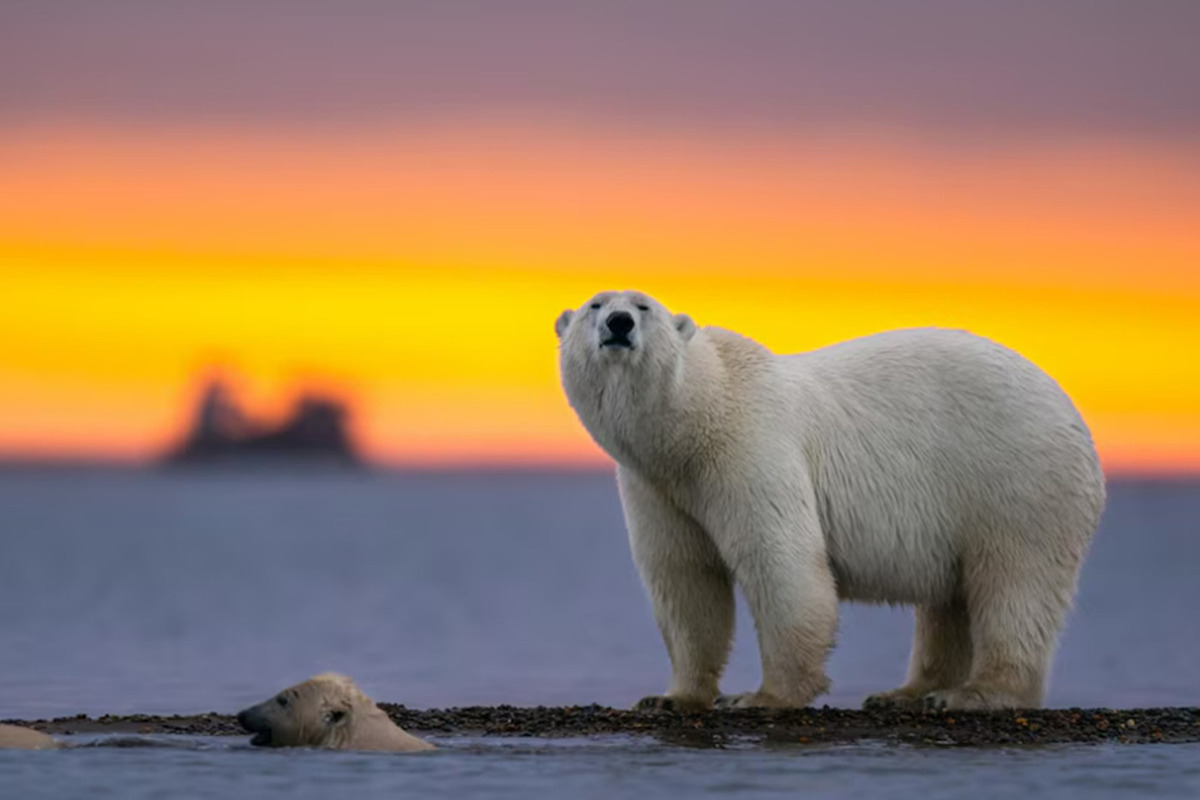Describes the impact of global warming on polar bears and walruses
[ad_1]

An ice-free summer in the Arctic will be possible sooner than expected
The habitat of polar bears, seals and walruses could be predominantly water for several months as early as 2035 due to fossil fuel emissions. The first ice-free day in the Arctic could come more than 10 years earlier than scientists expected, a study has found.
The Arctic could experience summers with virtually no sea ice over the next decade due to emissions from burning fossil fuels, a study has found. This would transform the unique habitat, home to polar bears, seals and walruses, from a “white Arctic” to a “blue Arctic” during the summer months, scientists say. The calculation used for “ice-free” shows that the far north will be mostly covered by water.
According to the results, published in the journal Nature Reviews Earth & Environment, it became clear that consistently ice-free Septembers can be expected by 2035-2067. The exact year during this period depends on how quickly the world reduces the amount of fossil fuels it burns.
Alexandra Yang, assistant professor of atmospheric and oceanic sciences at the University of Colorado, noted that “such changes will transform the Arctic into a completely different habitat. So, even if ice-free conditions are inevitable, we still need to keep our emissions as low as possible to avoid long-term ice-free conditions.”
According to the scientist, there is potential to solve this problem: “Unlike the Greenland ice sheet, which took thousands of years to build, even if we melted all the Arctic sea ice, if we could then figure out how to bring CO2 back out of the atmosphere in the future, To reverse warming, sea ice will return within a decade.”
As their habitat melts, it’s not just Arctic wildlife that will suffer; people living on the coast will also experience difficulties. Sea ice reduces the impact of ocean waves on the coast, meaning that if it disappears, the waves will be stronger and larger and cause even more erosion.
The Arctic is currently warming nearly four times faster than the rest of the world, the region is receiving more rainfall and the permafrost is melting, leading to increased river flows. The Arctic water cycle also accelerates with rising temperatures, which means increased precipitation, evaporation, plant transpiration and river flow. This is primarily due to the inherent ability of a warmer atmosphere to retain more moisture. For the same reason, as the climate warms, more severe snow storms occur.
River water will also become warmer as climate changes and could cause coastal sea ice to melt. Scientists observed this phenomenon in the spring of 2023, when unusually warm water in Canada’s Mackenzie River carried heat into the Beaufort Sea, contributing to the early melting of coastal sea ice.
Scientists say there are concerns that rising river flows in the region are affecting the Atlantic Meridional Overturning Circulation—currents that carry heat from the tropics up along the U.S. East Coast toward Europe. There is growing evidence that these currents are slowing in recent years as more fresh water enters the North Atlantic. If circulation stops, it will significantly affect temperatures in North America and Europe.
[ad_2]
Source link








